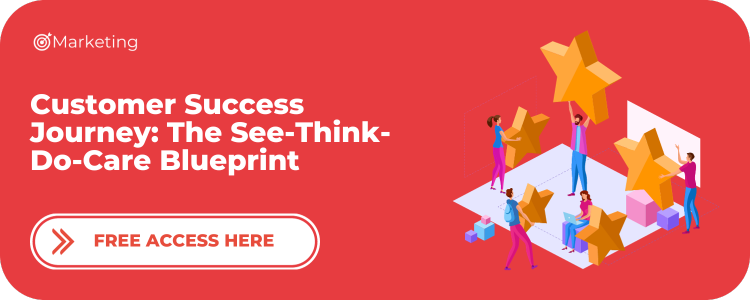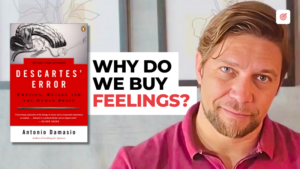
✅ FREE ACCESS: Customer Success Journey: The See-Think-Do-Care Sales Blueprint
In today’s world of endless choices, decision-making feels more like a burden than a benefit.
That’s known as the ‘choice paradox’—where too many options cause frustration and regret.
But what if we could turn this paradox into a powerful tool?
Let’s explore how Alexander Graham Bell’s invention of the telephone and a counterintuitive approach to sales can outsmart the choice paradox and transform overwhelming options into a driver of success.
The Evolution of Choices
As we trace human progress from the dawn of civilization to the digital age, every leap forward brought an expansion of choices with it.
In ancient times, daily decisions were straightforward yet vital for survival—what to hunt, where to find shelter. Life was governed by nature’s boundaries.
Fast forward to today, and the landscape is strikingly different. Our world is awash with options.
With just a few clicks, the sum of all human knowledge and a global marketplace are at our fingertips.
But this abundance of choices doesn’t always mean freedom.
Instead, it often leads to a phenomenon known as the ‘choice paradox,’ where more options lead to indecision and less satisfaction.
As we find ourselves overwhelmed by these choices, we must ask: How can we turn this challenge into an opportunity for growth and innovation?
The Entrepreneurial Spirit and the Choice Paradox
In the vast expanse of choices, brimming with possibilities and paths to take, lie innovators who see beyond the horizon, pioneers who navigate not by the stars of conventional success, but by the deeper compass of their convictions and purpose.
Visionaries who see the choice paradox not as a barrier, but as a call to action.
Entrepreneurs who, in the face of a world where people feel overwhelmed, unhappy, and unsatisfied, are committed to communicating their vision in the most seamless and compelling way.
Why?
Because at the heart of the choice paradox lies the understanding that simplicity is the ultimate degree of sophistication.
Inspired by his wife and mother, both of whom were deaf, Alexander Graham Bell was motivated by the vision to improve communication for the hearing impaired.
His invention of the telephone, a result of that vision, revolutionized human communication.
His story is a testament to the impact of choosing simplicity in the age of abundance, reminding us that at the core of true innovation lies the desire to make life better.
That’s the entrepreneurial spirit that rises from the choice paradox.
In the Customer Success Journey Workbook, you will learn how to lead your audience through a journey of discovery, connection, and value by using the See-Think-Do-Care Sales Blueprint.
Transform the way you interact with those you serve, making more sales by shifting from mere transactional exchanges to building lasting relationships based on trust and reciprocity.
By granting your free lifetime access to this workbook today, you’re not only offering a solution to the choice paradox to a modern audience; you’re committing to a journey of continuous engagement and sustainability, for both you and your customers.
Plus, you have access to all future updates at no cost.
The link is in the description.
Decision Paralysis: The Hidden Cost of the Choice Paradox
In a world saturated with options, the choice paradox doesn’t just overwhelm—it can paralyze.
That happens when the fear of making the wrong decisions leads to no decision at all, freezing us into a state of inaction.
It’s a conflict between our need for autonomy and our fear of making a mistake.
Autonomy drives us to seek control over our decisions, but as the number of options increases, so does the complexity of weighing them, leading to a counterintuitive loss of control.
We are left feeling incapacitated, trapped by potential outcomes and hypothetical trade-offs.
This can stifle creativity and innovation, as the fear of failure or making suboptimal choices can prevent us from taking necessary risks or trying new approaches.
But in the end, when we look back, we often realize that the worst decision was not making any decision at all.
From Paradox to Power: Turning the Choice Paradox into a Powerful Marketing Asset
While the choice paradox can overwhelm and paralyze, it also offers a unique opportunity for growth.
Consider the Timing of Your Offers.
Traditional Marketing tactics like upsells, downsells, and cross-sells are highly effective in maximizing revenue per customer.
Ryan Deiss’s tripwire method or Michael Masterson’s business scalable techniques have been widely adopted in marketing and businesses.
Yet, these tactics must be paired with one critical element: Time. When timed poorly, these tactics can lead to the choice paradox.
So, by strategically spacing out your offers, you give customers the breathing room they need before considering another purchase.
This not only reduces decision fatigue but also enhances the overall customer journey, making each interaction more meaningful and less overwhelming.
Add Natural Progressions to Previous Offers
Also, aligning subsequent offers as natural progressions of the initial purchase can ease decision-making for your customers.
This method ensures that each offer feels like a necessary step in fulfilling their original need or desire, simplifying their choices, and enhancing the perceived value of your products or services.
Use Reciprocity to Cultivate Trust
But the most important tactic to demolish the choice paradox in your relationship with your audience is to cultivate trust through reciprocity.
This dramatically reduces decision fatigue.
When customers trust you, they spend less energy and time weighing each offer, making it easier for them to commit to purchases.
This trust can be achieved by what I like to call The Low-Pitch Sales Formula.
- More service and fewer short-term sales = (More authority + More Long-term Sales) Word of Mouth
People don’t buy products, people buy feelings.
That demands a commitment to values that not only guide personal choices but also inspire and elevate community standards.
By doing so, we end up making the world a little better along the way, one choice at a time.




